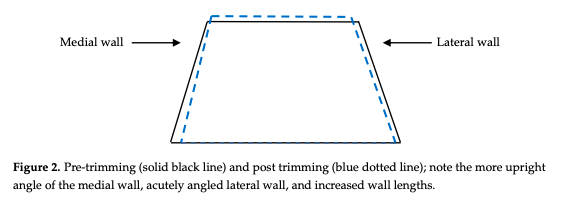
Shoeing interval for the working equine
Hoof conformation has a significant influence on limb biomechanics, and can lead to lameness or other issues. This makes the farrier indispensable in our modern-day horse-care. The ideal time between trimmings was, however, not yet defined. This research investigated what time-frame is best.
26 horses were included in this study. To create equal circumstances for every horse the included subjects were all stabled at the same school and had the same training regime prior and during the experiment. None of the horses had any corrective shoeing beforehand and all of them were sound. All of the horses were accustomed to having a farriery interval every 4-6 weeks. Lateral (from the outside) hoof measurements, dorsal (front) hoof measurements, and lateral limb measurements were made before and after their treatment. With these measurements medio-lateral variation and centre of pressure were calculated.
Before trimming it was seen that the dorsal hoof wall angle was decreased, which leads to more loading of the heel. Increased loading of the heel increased the chance of suspensory ligament injuries. After trimming, they saw that the dorsal hoof wall was shortened more than the heel causing the foot position to be more vertically, influencing all the joints further up. This promotes a better dorsopalmar balance. During this experiment it was seen that the 4-6-week interval already induced this shift to more loading in the heel. The authors conclude that 4-6 weeks is the maximal duration that should be in between trimmings to reduce injury susceptibly.
Expert opinion by Charlotte De Bruyne
All of these horses had the same living conditions and training regime. It could be that the ideal trimming-interval is influenced by housing and training, so these results may only be valid if your horse is living in similar circumstances.
> From: Lésniak et al., Animals 7 (2017) 29. All rights reserved to Lésniak K, Williams J, Kuznik K, Douglas P. Click here for the online summary.


